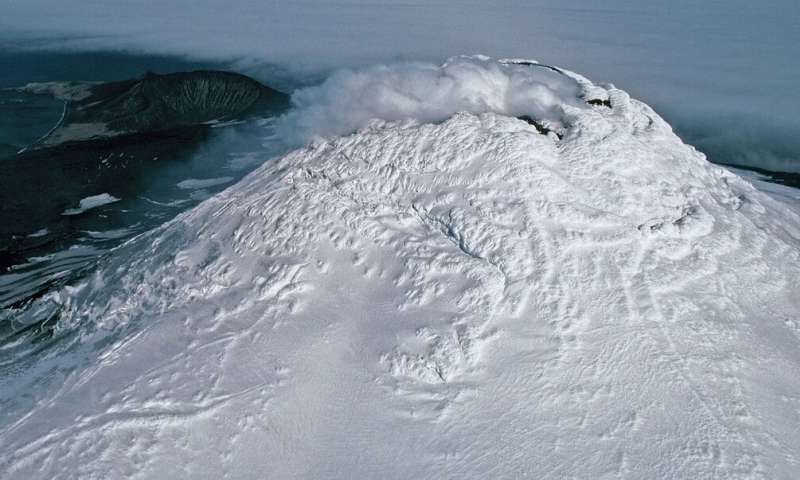Rare Lava Lake Found on Top of Sub-Antarctic Volcano
Satellite data located the persistent pool of liquid rock on top of Mt. Michael on Saunders Island, part of the South Sandwich Islands
/https://tf-cmsv2-smithsonianmag-media.s3.amazonaws.com/filer/15/f3/15f3d9f2-1fcf-401a-8482-134959c8640b/lake_of_fire.jpg)
Hollywood would have you believe that at the peak of most volcanoes is a roiling, red-hot lake of lava, perfect for human sacrifices or killing James Bond. Persistent lava lakes are actually quite rare; of Earth’s roughly 1,500 volcanoes, only seven are known to have lava lakes. So, the discovery of an eighth lava-topped volcano in the sub-Antarctic Sandwich Islands is a big deal, according to a new study in the Journal of Volcanology and Geothermal Research.
The new lava lake is found on the summit of Mount Michael on Saunders Island, which is part of the British Overseas Territory of South Georgia and the South Sandwich Islands. According to a press release from the British Antarctic Survey, the hot spot was originally hinted at in 2001 when low-resolution satellite data showed a geothermal anomaly at the top of the peak.
Geologists used higher resolution satellite images of the mountain taken between 2003 and 2018 and cross-referenced that information with additional datasets going back 30 years. Using advanced image processing techniques, they were able to determine that a lake of fire roughly 300 to 700 feet wide was present throughout the time period. They estimated that the lava lake is smoldering between 1,800 and 2,300 Fahrenheit.
So why didn’t researchers just climb the mountain and peer over the edge? Danielle Gray from University College London, first author of the study, explains that traveling to Saunders Island is extremely difficult and getting to the top is likely impossible except to elite mountaineers.

“It has been visited at the bottom very rarely, and no one has ever got to the summit,” study co-author Alex Burton-Johnson of the British Antarctic Survey tells Tom Metcalfe at LiveScience.
The next step in investigating the lava lake is to send a drone or aircraft over the mountain. But even that will take some complicated logistics and lots of money. “The problem is that the South Sandwich Islands are so incredibly remote, there is very little ship traffic that goes past there,” says Burton-Johnson. “So there are not a huge amount of opportunities for research vessels in that area.”
The discovery of the new lake will help researchers understand how to monitor volcanoes from space and teach them more about the rare, persistent lava pools, which also occur on the Nyiragongo volcano in the Democratic Republic of Congo; the Erta Ale volcano in Ethiopia; Mount Erebus in Antarctica; Kilauea on the island of Hawaii, Mount Yasur and Ambrym in Vanuatu; and Masaya in Nicaragua.
Why do these volcanoes maintain liquid lava lakes while the molten rock congeals and plugs up most other volcanoes? Burton-Johnson tells Metcalfe that in most cases the steam and superheated gases that power volcanic eruptions isn’t enough to keep rock molten at the surface. But in a few special cases, the gases remain at high enough temperatures to keep a bright orange cauldron of lava bubbling at the summit.